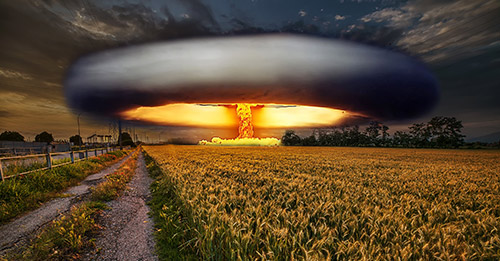Over the past week or so I’ve been receiving a steady stream of emails demanding to know whether an all-out nuclear war is about to erupt between the US and Russia. I’ve been watching the situation develop more or less carefully, and have been offering my opinion, briefly, one on one, to a few people’s great relief, and now I will attempt to spread the cheer far and wide. In short, on the one hand, all-out nuclear annihilation remains quite unlikely, barring an accident. But, on the other hand, such an accident is by no means impossible, because when it comes to US foreign policy “Oops!” seems to be the operative term.
One reason to be cheerful is that any plan to attack Russia is bound to become mired in bureaucracy. Battle plans are developed by mid-rank people within the US military establishment, approved and forwarded up the chain of command by higher-rank people and finally signed off on by the Pentagon’s top brass and their civilian political accomplices. The top brass and the politicians may be delusional, megalomaniacal and inadvertently suicidal, but the mid-rank people who develop the battle plans are rarely suicidal. If a particular plan has no conceivable chance of victory but is quite likely to lead to them and their families and friends becoming vaporized in a nuclear blast, they are unlikely to recommend it.
Another reason to be cheerful is that Russia has carefully limited the Pentagon’s options. One plan that, in the popular imagination, could lead to an all-out war with Russia, would be the imposition of a no-fly zone over Syria. What many people miss is that it is not possible to impose a no-fly zone on a country with a sufficiently powerful air defense system, such as Syria. As a first step, the air defense system would have to be taken out, and the air campaign to do so would be very expensive and incur massive losses in both equipment and personnel. But then the Russians made this step significantly worse by introducing their S-300 system. This is an autonomous, tracked, mobile system that can blow objects out of the sky over much of Syria and some of Turkey. It is very difficult to keep track of, because it can use “shoot and scoot” tactics, launching an attack and crawling away in a random direction over rough terrain.












